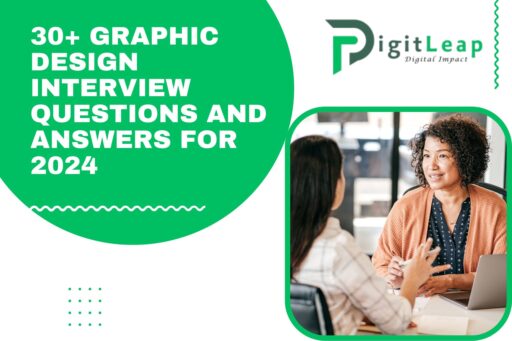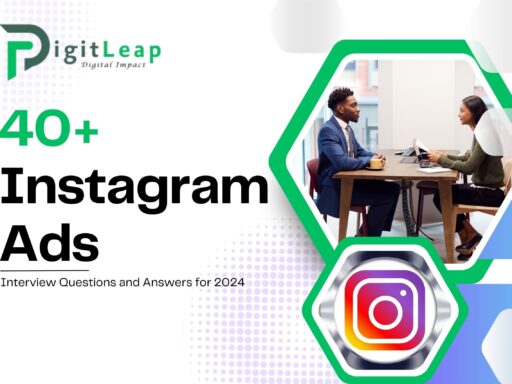30+ Graphic Design Interview Questions and Answers for 2024
Graphic design is a field that blends creativity with technical skills. Whether you’re preparing for an interview or looking to sharpen your knowledge, this guide covers over 30 essential graphic design questions and answers to help you succeed.
1. What is Graphic Design?
Answer: Graphic design is the art and practice of planning and creating visual content to communicate ideas and messages. It involves the use of typography, imagery, color, and layout to convey information effectively.
2. What Are the Key Principles of Graphic Design?
Answer: The key principles of graphic design include balance, contrast, alignment, repetition, proximity, and space. These principles help create visually appealing and effective designs that communicate the intended message.
3. What is the Role of Typography in Graphic Design?
Answer: Typography is the art of arranging text in a design. It plays a crucial role in readability, tone, and the overall aesthetic of a design. Good typography ensures that text is legible and aligns with the brand’s message.
4. What is the Importance of Color Theory in Design?
Answer: Color theory is essential in graphic design as it influences the mood, emotion, and perception of a design. Understanding color relationships, harmonies, and contrasts helps designers create visually appealing and effective designs.
5. What Are the Different Types of Graphic Design?
Answer: The different types of graphic design include branding and identity design, web and digital design, print design, packaging design, and motion graphics. Each type requires specific skills and focuses on different aspects of visual communication.
6. How Do You Approach a New Design Project?
Answer: Approach a new design project by first understanding the client’s needs, target audience, and objectives. Then, conduct research, create a mood board or sketch, and develop multiple design concepts before refining the final design.
7. What is the Role of a Mood Board in Design?
Answer: A mood board is a visual tool that helps designers communicate the overall feel, style, and direction of a project. It includes images, colors, textures, and typography that inspire the design and align with the project’s goals.
8. How Do You Stay Updated with Design Trends?
Answer: Stay updated with design trends by following design blogs, attending industry conferences, participating in online communities, and continually experimenting with new tools and techniques. This ensures your designs remain fresh and relevant.
9. What is the Difference Between Vector and Raster Graphics?
Answer: Vector graphics are made of paths and are scalable without losing quality, making them ideal for logos and illustrations. Raster graphics are made of pixels and can lose quality when scaled, making them suitable for photographs and detailed images.
10. What Software Do You Commonly Use for Graphic Design?
Answer: Common software used for graphic design includes Adobe Creative Suite (Photoshop, Illustrator, InDesign), CorelDRAW, Sketch, Figma, and Canva. Each software serves different purposes, such as photo editing, vector design, and layout creation.
11. How Do You Handle Criticism of Your Design Work?
Answer: Handle criticism by remaining open-minded and viewing feedback as an opportunity for improvement. Ask for specific details about what needs to change, and use the feedback to refine the design while maintaining your creative vision.
12. What is the Role of Branding in Graphic Design?
Answer: Branding in graphic design involves creating visual elements that represent a brand’s identity, such as logos, color schemes, and typography. It helps establish a brand’s personality, build recognition, and differentiate it from competitors.
13. How Do You Ensure Your Designs Are Accessible?
Answer: Ensure designs are accessible by considering color contrast, text readability, and user experience for people with disabilities. Use tools like color contrast checkers and adhere to accessibility guidelines to create inclusive designs.
14. What is White Space, and Why is it Important?
Answer: White space, or negative space, is the empty area around design elements. It is important because it improves readability, creates balance, and helps focus attention on the most important parts of the design.
15. How Do You Incorporate Feedback into Your Design Process?
Answer: Incorporate feedback by listening carefully to the client’s or team’s suggestions, making necessary adjustments, and testing the revised design to ensure it aligns with the project’s goals. Feedback helps refine the design and improve its effectiveness.
16. What is the Role of a Grid System in Design?
Answer: A grid system is a framework that helps organize content on a page, providing structure and consistency. It ensures alignment and proportion, making the design more visually appealing and easier to navigate.
17. How Do You Balance Creativity with Practicality in Design?
Answer: Balance creativity with practicality by considering the client’s objectives, the target audience, and the project’s constraints while exploring innovative design solutions. Creativity should enhance, not hinder, the functionality and clarity of the design.
18. What is the Importance of Consistency in Design?
Answer: Consistency in design ensures that all visual elements align with the brand’s identity and communicate a cohesive message. It builds trust, reinforces brand recognition, and creates a professional appearance.
19. How Do You Handle Tight Deadlines?
Answer: Handle tight deadlines by prioritizing tasks, managing time efficiently, and breaking the project into manageable steps. Effective communication with clients and team members is also crucial to ensure expectations are clear and realistic.
20. What is the Role of Prototyping in Design?
Answer: Prototyping allows designers to create a preliminary model of the design to test its functionality and user experience. It helps identify issues early in the process, ensuring the final design is user-friendly and effective.
21. How Do You Choose the Right Typography for a Project?
Answer: Choose the right typography by considering the project’s purpose, audience, and brand identity. The typeface should enhance readability and align with the overall aesthetic and tone of the design.
22. What is the Difference Between UI and UX Design?
Answer: UI (User Interface) design focuses on the visual elements and layout of a product, while UX (User Experience) design is concerned with the overall experience and usability. Both are essential for creating intuitive and user-friendly designs.
23. How Do You Ensure a Design is Print-Ready?
Answer: Ensure a design is print-ready by setting the correct resolution (300 DPI), using CMYK color mode, including bleed margins, and saving the file in a print-friendly format like PDF. It’s also important to check the design for any potential print issues.
24. What is the Role of Hierarchy in Design?
Answer: Hierarchy in design refers to the arrangement of elements to indicate their importance. It helps guide the viewer’s eye and ensures that the most important information is noticed first. This can be achieved through size, color, contrast, and placement.
25. How Do You Approach Designing for Different Cultures?
Answer: Approach designing for different cultures by researching the target audience’s cultural norms, values, and preferences. Consider color meanings, symbols, and design elements that resonate with the audience, ensuring the design is culturally sensitive and effective.
26. What is the Purpose of a Style Guide?
Answer: A style guide is a document that outlines the visual standards for a brand or project, including typography, color schemes, logos, and imagery. It ensures consistency across all design materials and helps maintain brand identity.
27. How Do You Stay Motivated During Creative Blocks?
Answer: Stay motivated during creative blocks by taking breaks, seeking inspiration from other designers, experimenting with new techniques, and collaborating with peers. Keeping a positive mindset and staying open to new ideas can help overcome creative challenges.
28. What is the Role of Color in Conveying Emotion?
Answer: Color plays a significant role in conveying emotion in design. Different colors evoke different feelings and associations, such as red for passion, blue for calmness, and yellow for happiness. Understanding color psychology helps create designs that resonate emotionally with the audience.
29. How Do You Handle Multiple Design Projects Simultaneously?
Answer: Handle multiple design projects simultaneously by prioritizing tasks, setting clear deadlines, and managing time effectively. Use project management tools to keep track of progress and communicate regularly with clients and team members to stay organized.
30. What is the Importance of Visual Branding?
Answer: Visual branding involves creating a consistent visual identity for a brand, including logos, color schemes, typography, and imagery. It helps establish brand recognition, builds trust, and differentiates the brand in the marketplace.
31. How Do You Ensure Your Design Communicates the Intended Message?
Answer: Ensure your design communicates the intended message by understanding the project’s goals, target audience, and key message. Use design elements such as color, typography, imagery, and layout to reinforce the message and ensure clarity.






